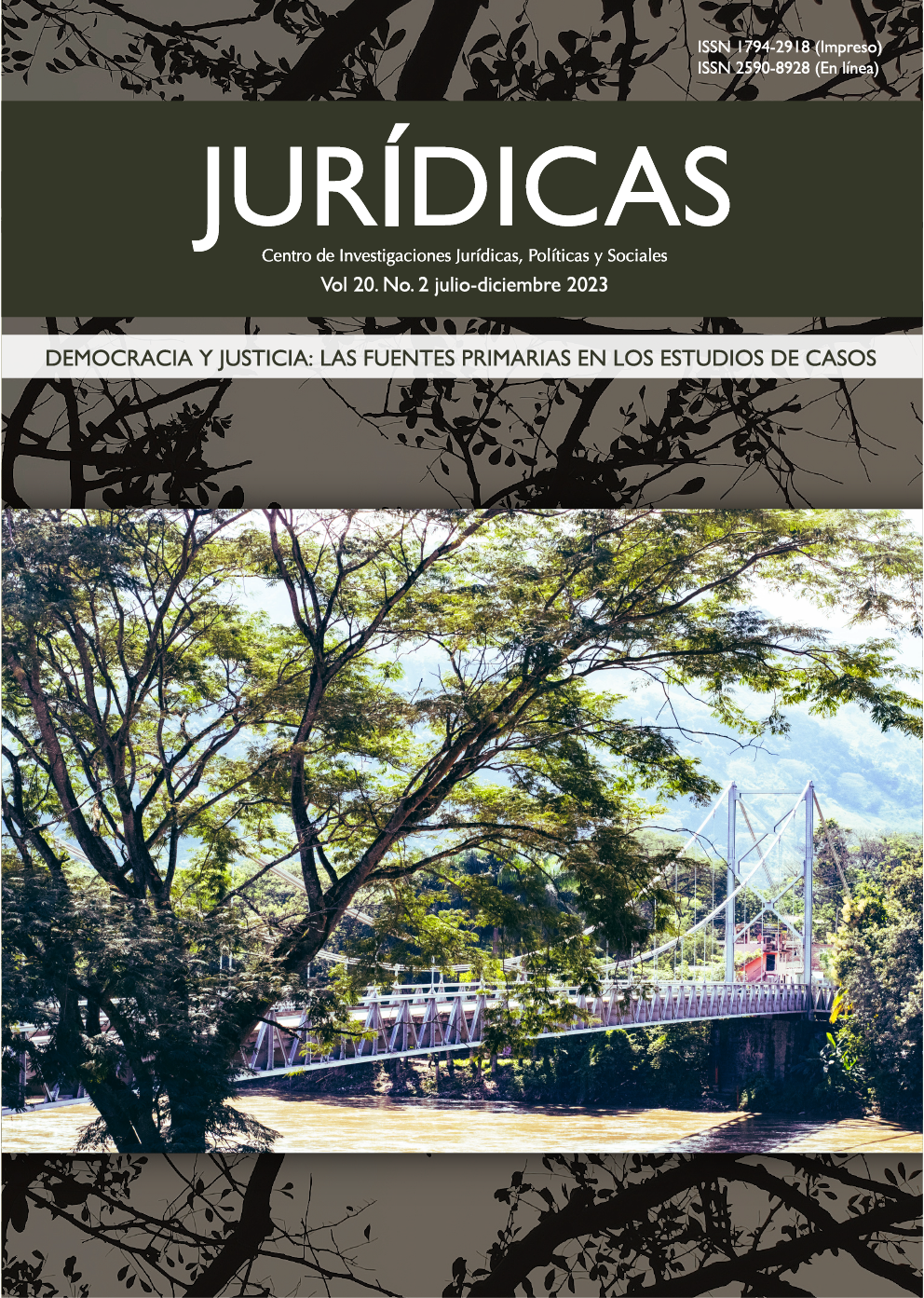Authors
Abstract
There have been many crimes carried out on the occasion and in development of the Colombian armed conflict by State agents, in this century they specialized in the commission especially of homicides in protected person in which the culprits were members of the Colombian army. This article determines the punishable behaviors that are designated in this country as State crimes and how they should be treated criminally when they are carried out by low-ranking soldiers or middle managers who colluded with civilians and other state agents to try to leave them in impunity. particularly forced disappearances of people and thousands of homicides. These crimes materialize in the midst of a State that, instead of safeguarding rights, limits them, curtails them, and consequently the possibilities of doing justice are remote, which reveals a state terror in which different governments have conceived at least for omission as part of its security policy a multiplicity of crimes against defenseless youths who did not belong to any guerrilla group, belonging to popular strata who were portrayed by the Colombian public force through the media as guerrillas killed in combat. This writing concludes that when examining these behaviors, it is found that they were not isolated events, that the crimes present a generality and systematicity and other particularities that, being a type of structural violence, can be classified as crimes against humanity. What, combined with what was indicated by the Special Jurisdiction for Peace, which has found that there are 6,402 deaths presented as casualties unlawfully presented in combat in which the perpetrators or participants are members of the Colombian army, leads to the deduction that they should be classified as crimes. persecuted internally and internationally.
References
Aponte C. A. (2006). Guerra y derecho penal del enemigo. Editorial Ibáñez.
Atiles-Osoria, J. M. (2016). Crímenes de Estado Colonial: Apuntes para el Desarrollo de un Concepto Socio-Jurídico. Sortuz: Oñati Journal of Emergent Socio-Legal Studies, 8(2), 1-19.
BBC News. (18 de febrero de 2021). Falsos positivos en Colombia: los miles de civiles que fueron asesinados por el ejército durante la guerra. BBC. https://www.bbc.com/mundo/noticias-americalatina-56119174
Collins, C. (2019). La idea de justicia frente a crímenes de Estado. En J. A. Guevara Bermúdez (ed.), Experiencias sobre justicia, verdad y memoria frente a crímenes de Estado (pp. 15-32). CMDPDH.
Comisión Interamericana de Derechos Humanos. Comunicado de prensa 036 de 2021.
Forer, A., Díaz, C. L., Errandonea, J., Cardona, J. P. y González, D. (2010). Acerca de los crímenes de lesa humanidad y su aplicación en Colombia. GIZ.
Fundación Comité de Solidaridad con los Presos Políticos. (6 de marzo de 2021). 6 de marzo: Somos miles y miles de víctimas de crímenes de Estado ¿quién dio la orden? Movice. https://acortar.link/VKvsEd
Human Rights Watch. (23 de junio de 2015). El rol de los altos mandos en falsos positivos. https://acortar.link/tZCUqM
Jave, I. (2020). Perú: Tensiones y avances en la construcción de memoria. Idehpucp. https://acortar.link/XWj7ro
JEP. Auto n.° 125 de 2021 (2 de julio).
Oquendo, C. (2021). El fiscal de Colombia imputa al exjefe del Ejército Mario Montoya por 104 ejecuciones extrajudiciales. El País.
Resolución de la Corte Interamericana de Derechos Humanos. (24 de noviembre de 2015). 12 casos guatemaltecos. https://www.corteidh.or.cr/docs/supervisiones/12_casos_24_11_15.pdf
Rothe, D. (2013). Teoría criminológica y crímenes de Estado: ¿cuán lejos se puede llegar? (Criminological Theory and State Crime: How Far Can it Go?). Crítica Penal y Poder, (5).
Taboada, A. (2019). Impactos psicosociales ante crímenes de Estado. En J. A. Guevara Bermúdez (ed.), Experiencias sobre justicia, verdad y memoria frente a crímenes de Estado (pp. 105-114). CMDPDH.
Torres-Vásquez, H. (2015). El delito de desaparición forzada de personas. Revista Republicana, 1(16). http://ojs.urepublicana.edu.co/index.php/revistarepublicana/article/view/2.
Torres-Vásquez, H. (2013). La delincuencia organizada trasnacional en Colombia. Díkaion, 22(1), 109-130.
Valcárcel, R. S. (2021). La impunidad de los crímenes de la dictadura y la ideología jurídica del olvido. Historia Actual Online, (56), 151-164.
Vásquez, H. T. (2010). El concepto de terrorismo de Estado. Diálogos de saberes, (33), 129-147.
Zaffaroni, E. R. (2012). El crimen de Estado como objeto de la criminología. Derechos humanos, reflexiones desde el Sur, 1-19.

 PDF (Español)
PDF (Español)
 FLIP
FLIP


























